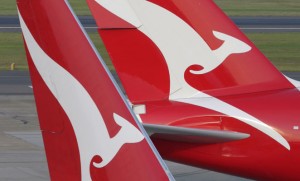Qantas has announced changes to its aircraft schedules to accommodate the grounding of its Airbus A380 fleet and has not yet indicated when the aircraft will return to the air. Meanwhile, the European Aviation Safety Agency (EASA) has issued an airworthiness directive which could result in more groundings of A380s.
Under the changes, the airline will operate its full schedule but will be substituting Airbus A330s on the Sydney-Tokyo and Sydney-Hong Kong routes, which are usually operated by Boeing 747-400s which have now been deployed on the London and Los Angeles services usually operated by A380s. The airline has also substituted Boeing 767-300s on its Perth-Singapore services in place of A330s, while there will be some adjustments to its domestic network to provide the capacity to its international domestic.
“While Qantas is committed to bringing its A380s back into service as soon as possible, this contingency schedule has been designed to provide certainty for customers planning to travel in the near future,” the airline said in a statement.
“Qantas’s A380 aircraft will not return to service until there is complete certainty that the fleet can operate safely,” the airline said, adding that its engineers and a team from Rolls-Royce are continuing to examine the Trent 900 engines on its A380s, paying attention to their performance under operational conditions as opposed to the original out-of-factory expectations.
Meanwhile, overnight EASA issued an airworthiness directive requiring operators of A380s with Trent 900 engines to periodically inspect the high pressure/intermediate pressure engine structure for abnormal oil leakage, and if any is found further operation of the engine is prohibited.
“This action is based on a preliminary analysis of the circumstances of the engine failure by the European Aviation Safety Agency, which the agency says shows that an oil fire in the high pressure/low pressure structure cavity may have caused the failure of the intermediate pressure turbine disc,” the ATSB said in its latest update on the A380 situation.
“For the reasons described above and pending conclusion of the incident investigation, this AD requires repetitive inspections of the low pressure turbine (LPT) stage 1 blades and case drain, HP/IP structure air buffer cavity and oil service tubes in order to detect any abnormal oil leakage, and if any discrepancy is found, to prohibit further engine operation,” the EASA AD reads.
It requires the inspection of the engines within 10 flight cycles of the AD’s issue, and then at 20 flight cycle intervals subsequently.
“The requirements of this AD are considered as interim action. If, as a result of the on-going incident investigation, a terminating action is later identified, further mandatory actions might be considered.”
















